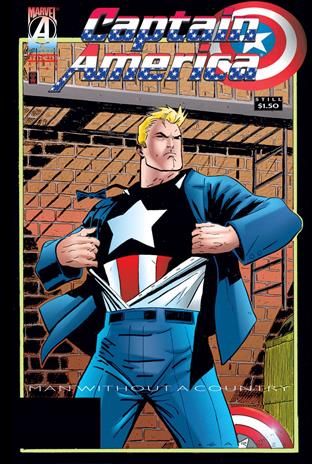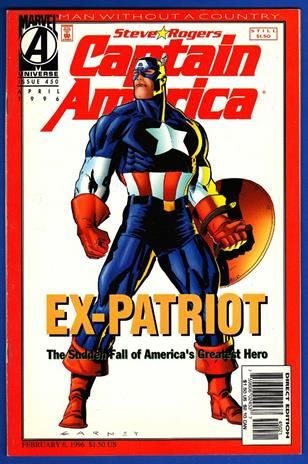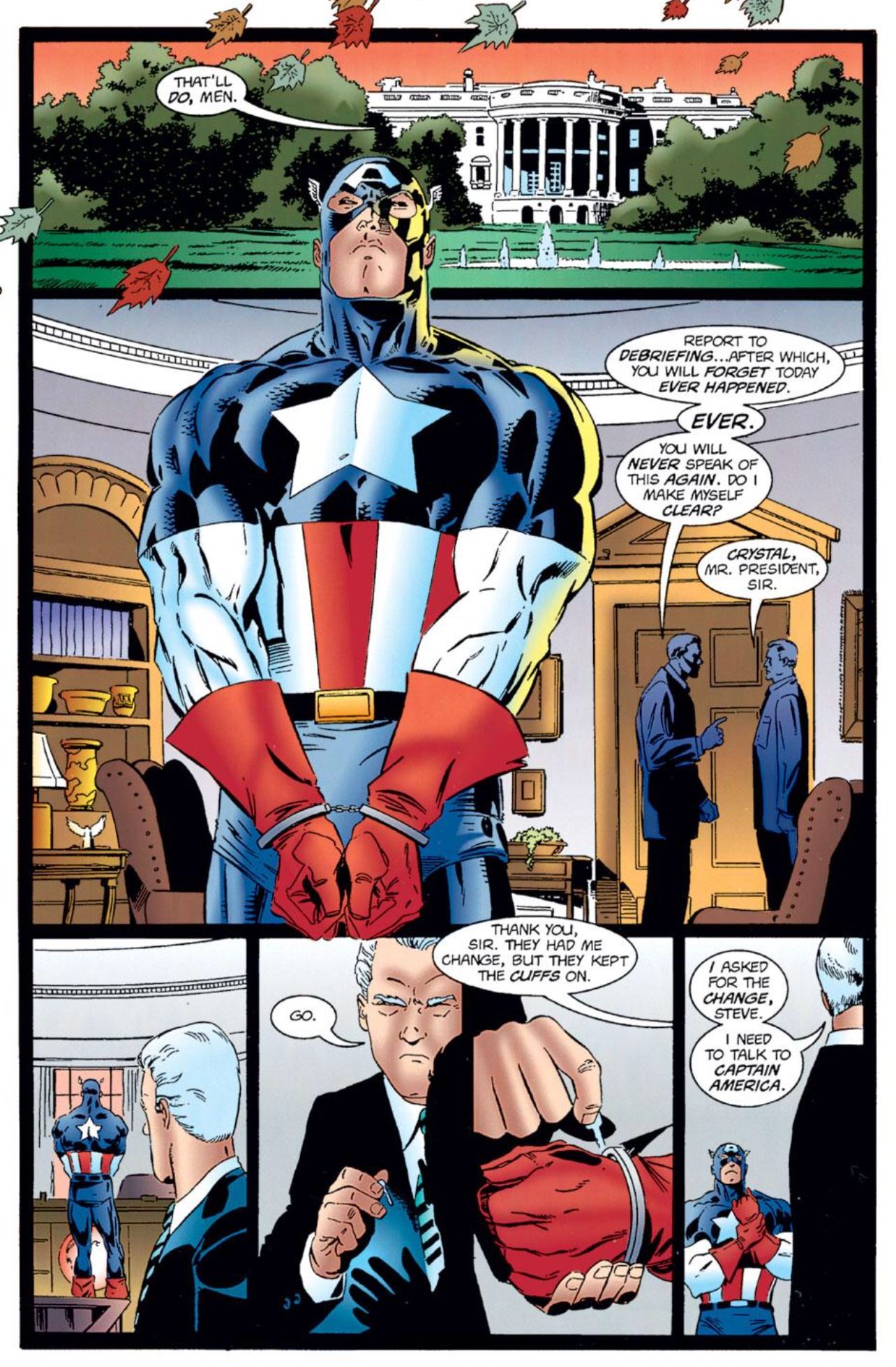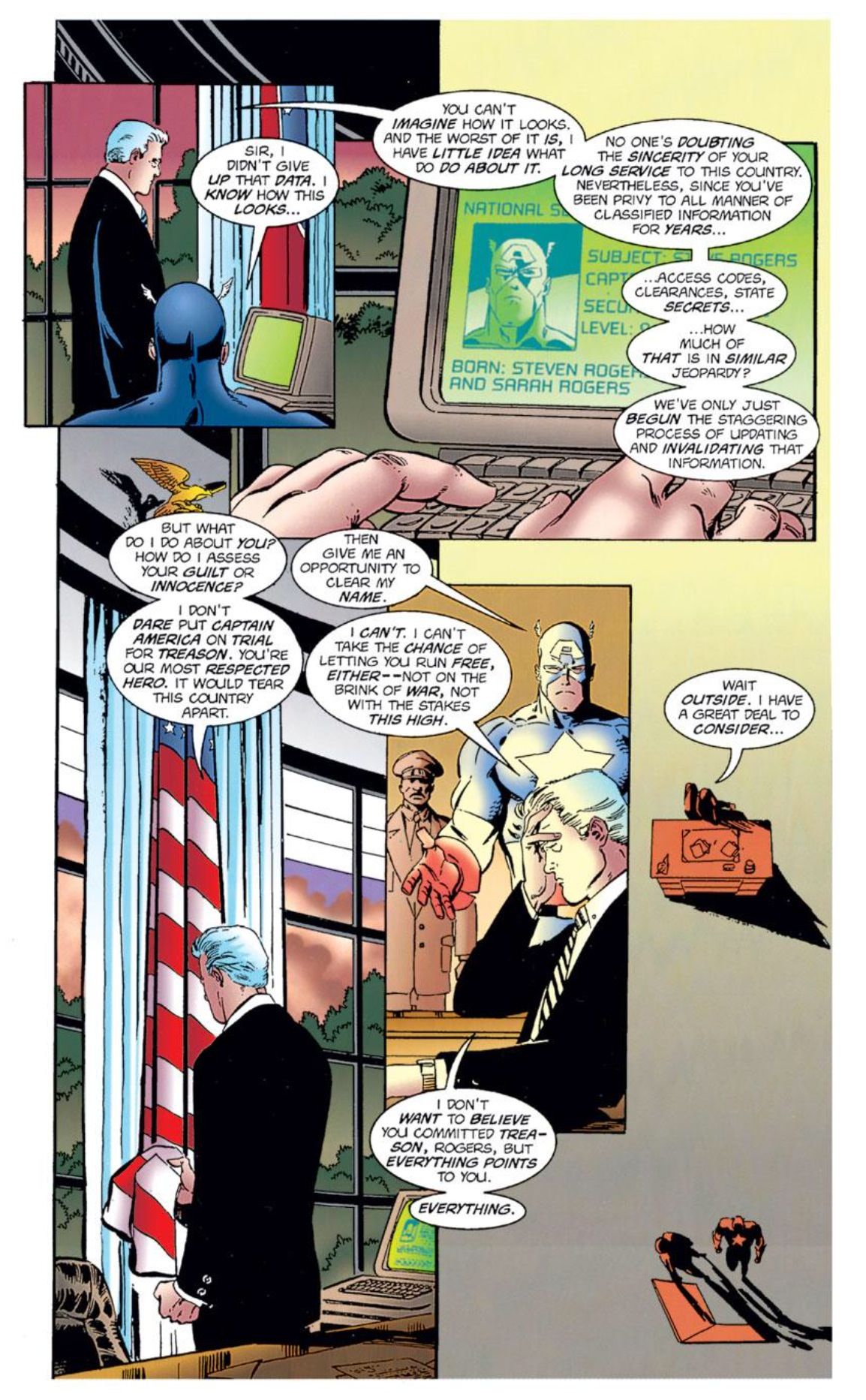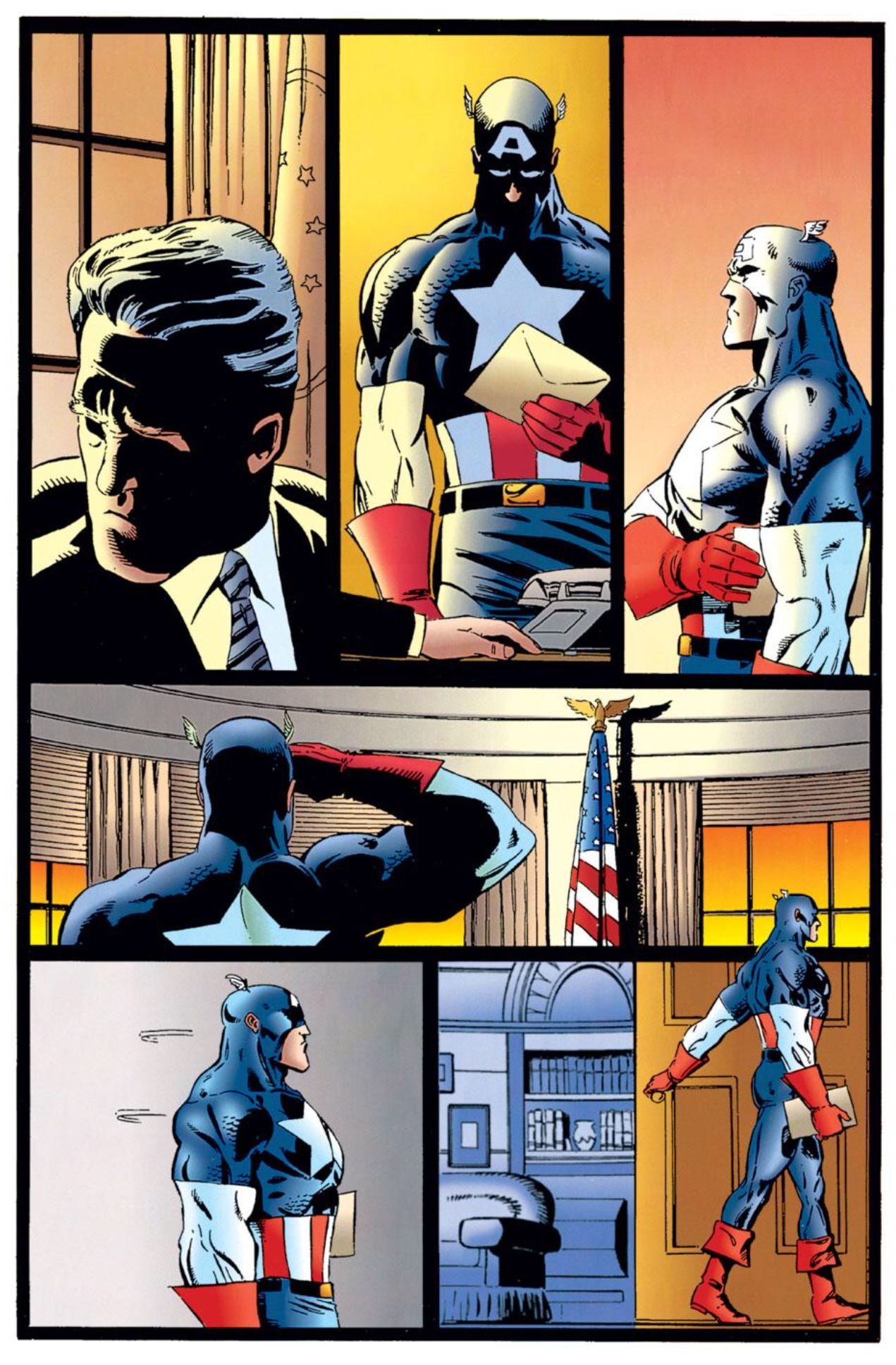In this column, Mark Ginocchio (from Chasing Amazing) takes a look at the gimmick covers from the 1990s and gives his take on whether the comic in question was just a gimmick or whether the comic within the gimmick cover was good. Hence "Gimmick or Good?" Here is an archive of all the comics featured so far. We continue with the dual covers for Captain America #450...
Captain America #450 (published April 1996) – script by Mark Waid, art by Ron Garney
Mark Waid and Ron Garney’s initial run on Captain America was a short-lived affair sandwiched between Mark Gruenwald’s 10-year tenure as writer and the controversial Heroes Reborn/Rob Liefeld reboot in 1996. Still, in only a handful of issues, Waid and Garney (who would return in 1998 for Vol. 3 of the series) crafted a number of highly regarded stories, including Captain America #450, the first part of the “Man Without a Country” arc. To celebrate the “historic” 450th issue of the series (remember, in the 90s, any issue number that could be divided by 25 was considered important), the comic sported two covers: one of Steve Rogers pulling off his shirt to reveal his Captain America attire (a la Superman), and another of Cap in full costume on the front page of a fictitious news magazine (which coincidentally resembles Time’s format and color scheme).
But what about inside the comic?
On paper, “Man Without a Country” sounds like just another “big” 90s storyline designed to shock readers. Who could imagine a world where the United States charges Captain America with treason? But Waid’s script maintains a sense of nuance, while also demonstrating an understanding that the best Cap stories ever told tend to be the ones where his optimism and virtue have been betrayed by the “system” he was created to protect.
In this story, Rogers is brought before the President of the United States (who unquestionably looks like former POTUS Bill Clinton) after surveillance footage shows him working alongside his arch nemesis the Red Skull, and the recently resurrected (and disenfranchised S.H.I.E.L.D. agent) Sharon Carter. As Cap tries to explain how he reluctantly aligned himself with the Skull in order to dispose of an even larger threat to the country, the President drops another bombshell, claiming the villain the Machinesmith had obtained classified information that was only made available to Rogers. This security breach has allowed Machinesmith a clear path to build a weapon of mass destruction.
Cap is obviously taken aback by these claims, but the POTUS doesn’t give him an opportunity to defend himself. Saying he would rather skip the media circus that would come with a trial, the president strips Rogers of his uniform and shield and ships him out to England.
Of course, Waid’s entire premise would be blown asunder if the POTUS considered Captain America’s entire career protecting and defending the United States, rather than rushing to judge him. But I’m able to suspend disbelief just enough because there are two distinct charges being levied against Cap: the Machinesmith security breach and the footage of him fighting alongside the Red Skull and Sharon Carter.
Regardless of this story’s questionable premise, from a broader perspective, I’ve always admired how earnestly Waid writes Captain America. It should not be confused with naiveté, but even when Cap’s world is ripping apart, there’s unquestionably a sense of hope and optimism in these mid-90s stories.
For example, in one scene, General Chapman tells Rogers that he expects “loyalty from all of our country’s soldiers.” The disenfranchised Cap’s reply is, “They called me ‘Captain’ … but I’m not a soldier. Not really. I serve something bigger than any one branch of the military….” In addition to giving us a spot of hope that Captain America will somehow rise above this personal disgrace, Waid’s dialogue also demonstrates the idea that has been explored by numerous writers and artists over the years that have tackled the character: is Cap’s true value to exist conceptually as a symbolic embodiment of our country’s ideals, or as a living, breathing person wearing a costume?
Garney’s art also manages to emphasize the comic’s dueling themes of hopelessness and optimism. After Cap is officially dismissed by the President, Garney illustrates a wonderful sequence of panels, showing the POTUS turning his head away in disgust, Captain America taking his dismissal letter, turning around to salute the flag, and then walking out. There’s just so much story in these six panels – conveying ideas of disgrace, loyalty, despair and inspiration – and not single word of text is required to tell it, thanks to Garney’s spread.
The Waid/Garney run in 1996 doesn’t get a ton of exposure these days, as most of the focus seems to be more on Ed Brubaker/Steve Epting’s time working on Cap (and deservedly so – that creative team was epic). However, “Man Without a Country” is a very strongly written and illustrated story, and Captain America #450 specifically stands on its own in isolation.
Verdict: Good


